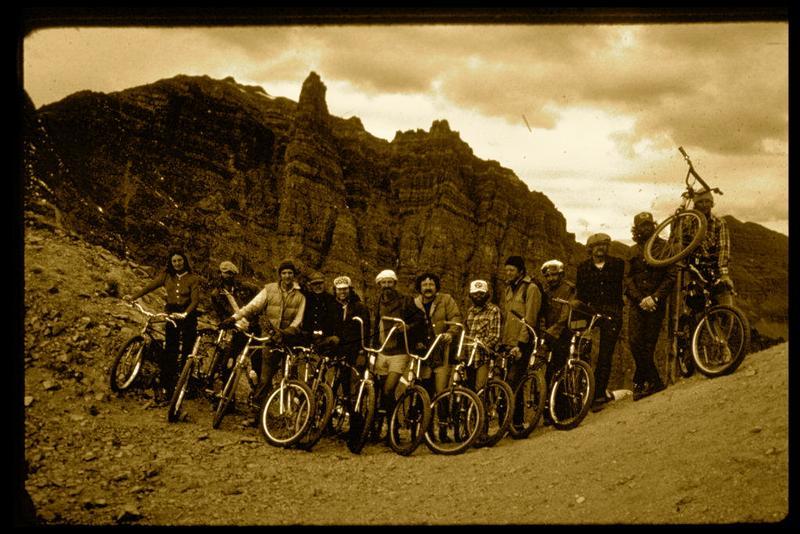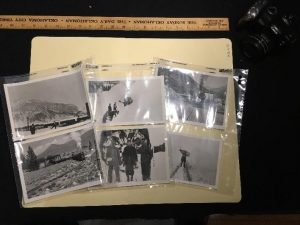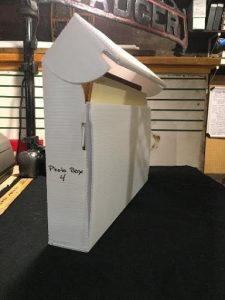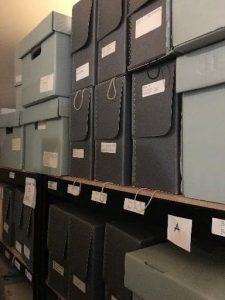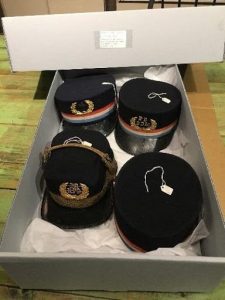WHAT HAPPENS TO AN ITEM IN THE COLLECTIONS?
When historic items walk through the door, museum staff always gets excited. It means we are going to hear new stories and learn more about our local history. The donor will meet with the curator and share what they know about the item. It is accepted int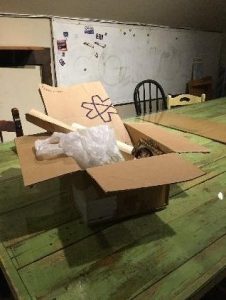 o the museum collection if it meets the mission of the museum, “to preserve and share the unique history of the Gunnison Valley. We make the past a living part of the future.” In other words, the item must represent a significant aspect of history from the Gunnison Valley.
o the museum collection if it meets the mission of the museum, “to preserve and share the unique history of the Gunnison Valley. We make the past a living part of the future.” In other words, the item must represent a significant aspect of history from the Gunnison Valley.
Often, items show up to the museum looking like this
The curator will review the condition of the items and accept items relating to the museum mission. The donor must then sign a deed of gift form. The deed of gift not only transfers ownership of the items, but also records the provenance, or context of the items. Where they came from, who they belonged to, why they are important for preservation. It also provides us information on who to call if we have questions when research is being done.
The items have been accepted into the collection. Okay, then what?
The curator or volunteers will catalog the item. The museum uses a program called PastPerfect 5.0 to store collections data. All the information provided by the donor is recorded in a digital catalog record, ensuring that history is not only searchable but also recorded in more than one location, just in case of disaster.
The item is then photographed or scanned. Having a digital representation allows researchers to easily view items without having to directly access them. The more an item is handled, the quicker it will deteriorate. Digital scans allow items to be accessed without causing permanent damage.

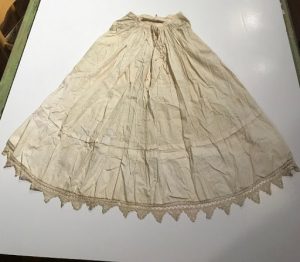 Once the item has been completely recorded, it will be rehoused. It is taken out of the cardboard boxes and manila envelopes and stored in acid-free boxes and sleeves. Cardboard and newspaper are incredibly acidic and will deteriorate treasured items. Also, bugs love cardboard and chewing on paper. Therefore, we must rehouse in archival museum quality materials to ensure these items last the next 100 years.
Once the item has been completely recorded, it will be rehoused. It is taken out of the cardboard boxes and manila envelopes and stored in acid-free boxes and sleeves. Cardboard and newspaper are incredibly acidic and will deteriorate treasured items. Also, bugs love cardboard and chewing on paper. Therefore, we must rehouse in archival museum quality materials to ensure these items last the next 100 years.
On average, it will take 30 minutes to catalog one item. Therefore, a collection with 92 items could take up to 46 hours of time from the curator and volunteers to completely catalog and store.
GREAT! EVERYTHING HAS BEEN RECORDED AND SAFELY STORED. WHEN WILL WE SEE OUR ITEMS GO ON EXHIBIT?
The Gunnison Valley is radiant with stories from history. There is so much to tell! With over 18,000 objects in the collections there is so much we wish we could share! As a museum, we must walk a fine line between preserving collections and sharing them with the public. Remember, the more an item is handled and exposed, the faster it will deteriorate. The best thing that could be done to preserve our history would be to put it away in a box forever. But we all know that’s not why we care about local history. We care about local history because we LOVE to SHARE local history!
Some items are on semi-permanent exhibit, helping us tell the overall history of the Gunnison Valley. We say semi-permanent because nothing is truly permanent. Since 2018, we have installed “temporary exhibits,” exhibits that last only a year and tell a specific story. This allows for different items from the collection to come out of storage and be put on display. We love the chance to tell stories some of our visitors may not have heard before and exhibit items that may not fit into the history told by the semi-permanent exhibits.
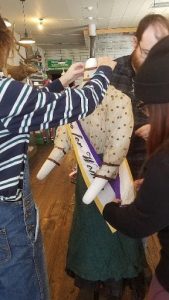
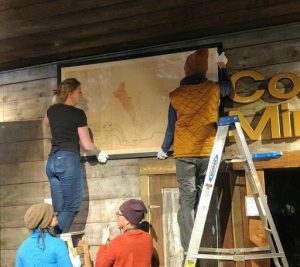
WITH SO MANY IMPORTANT STORIES TO TELL, HOW DOES THE MUSEUM CHOOSE WHAT THE TEMPORARY EXHIBIT WILL BE?
It’s hard to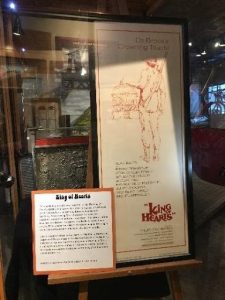 build an exhibit around one item. It takes many items and the communities of the Gunnison Valley to share their history to create an exhibit. We cannot record and display history we do not know. Remember, we are a small group of dedicated professionals who also run a non-profit, hold events, maintain a historic building, provide educational programming, and more! We love doing research, but we need the help of the community to build on the historical record. Once we have collected enough information and items around a topic, we’ll be able to share it in an exhibit.
build an exhibit around one item. It takes many items and the communities of the Gunnison Valley to share their history to create an exhibit. We cannot record and display history we do not know. Remember, we are a small group of dedicated professionals who also run a non-profit, hold events, maintain a historic building, provide educational programming, and more! We love doing research, but we need the help of the community to build on the historical record. Once we have collected enough information and items around a topic, we’ll be able to share it in an exhibit.
Be sure to take a look at our museum window and visit our pop-up exhibits in the summer where we take the opportunity to display many of the items that are donated to the museum throughout the year.

